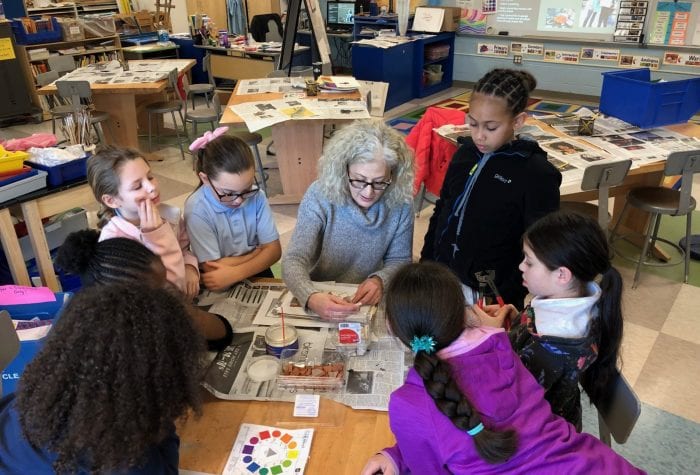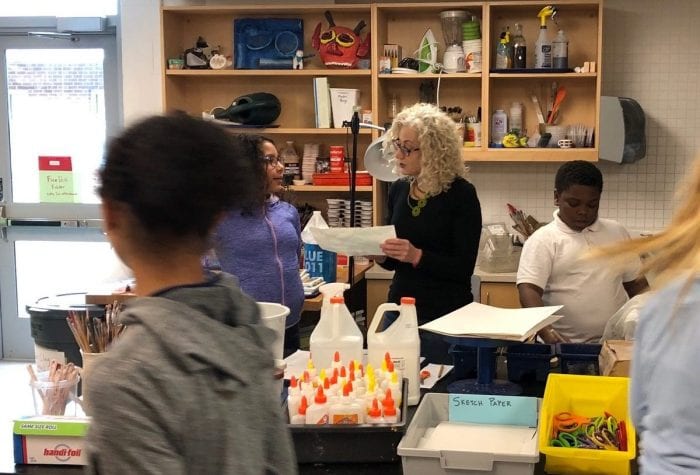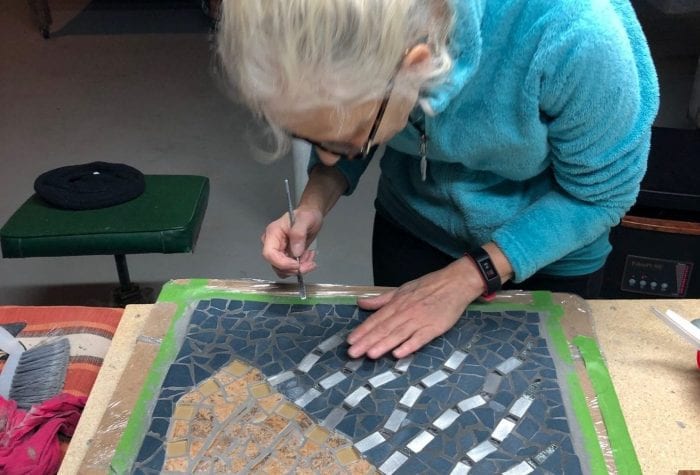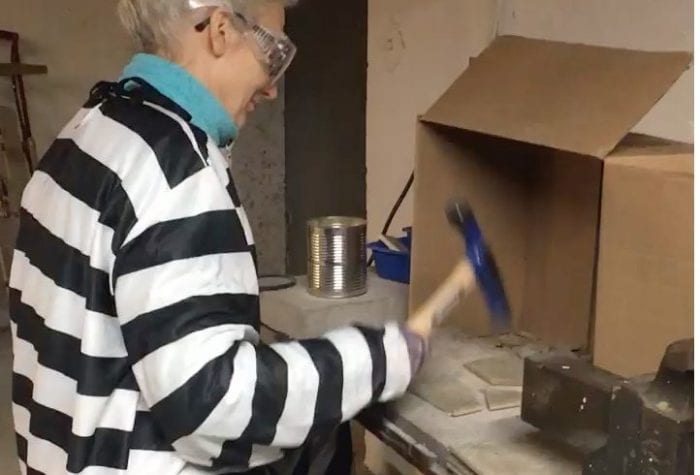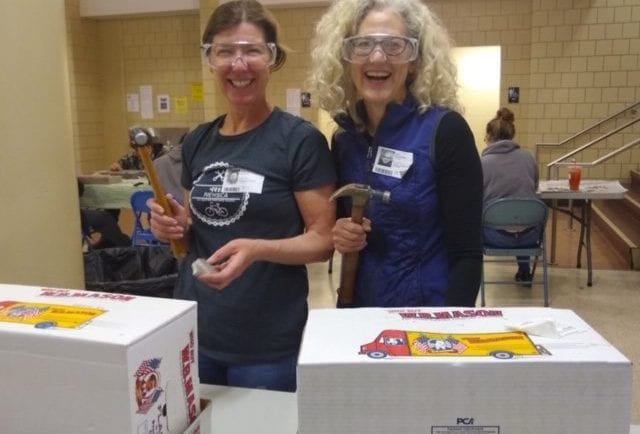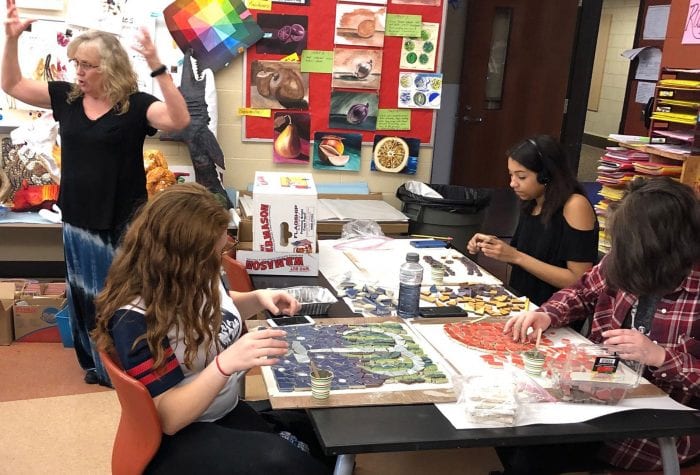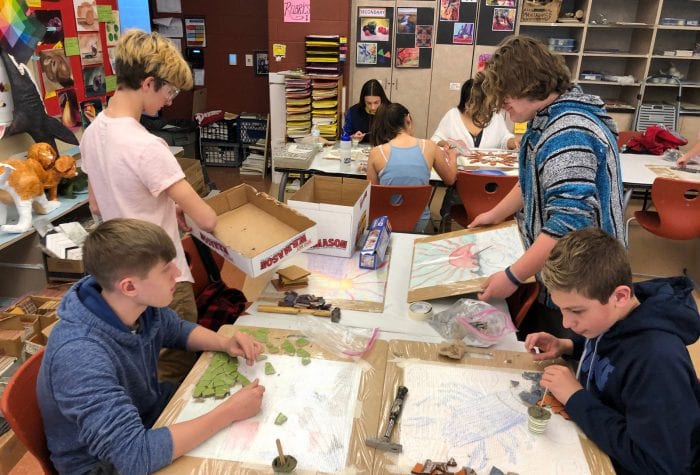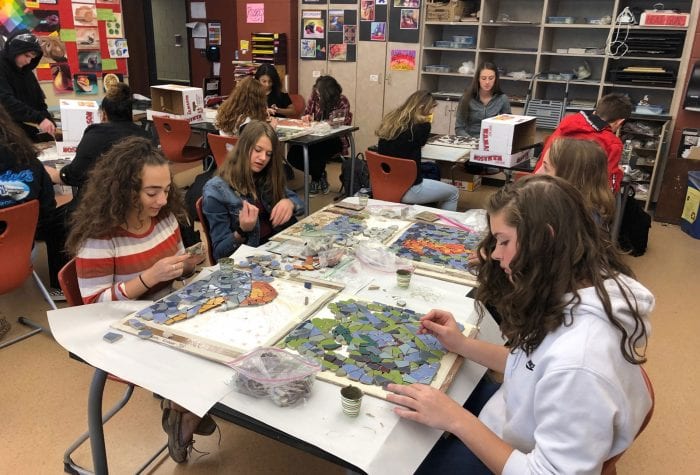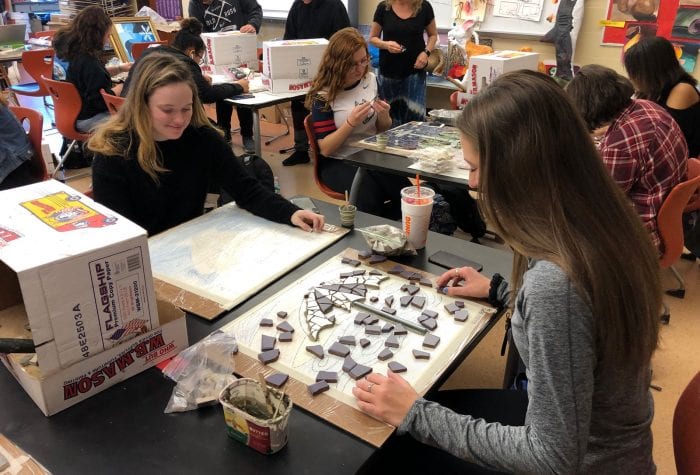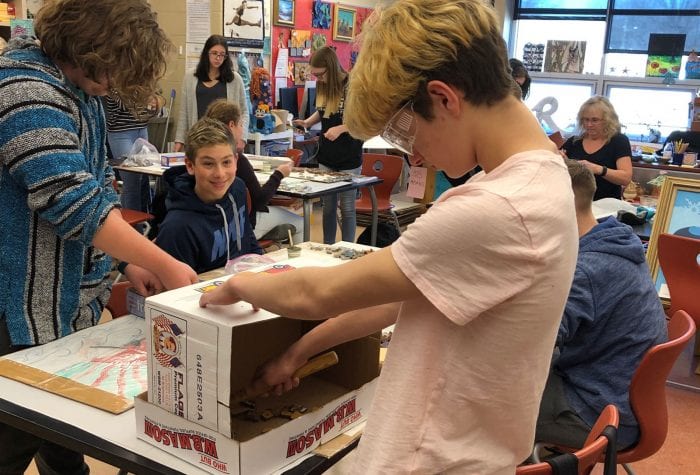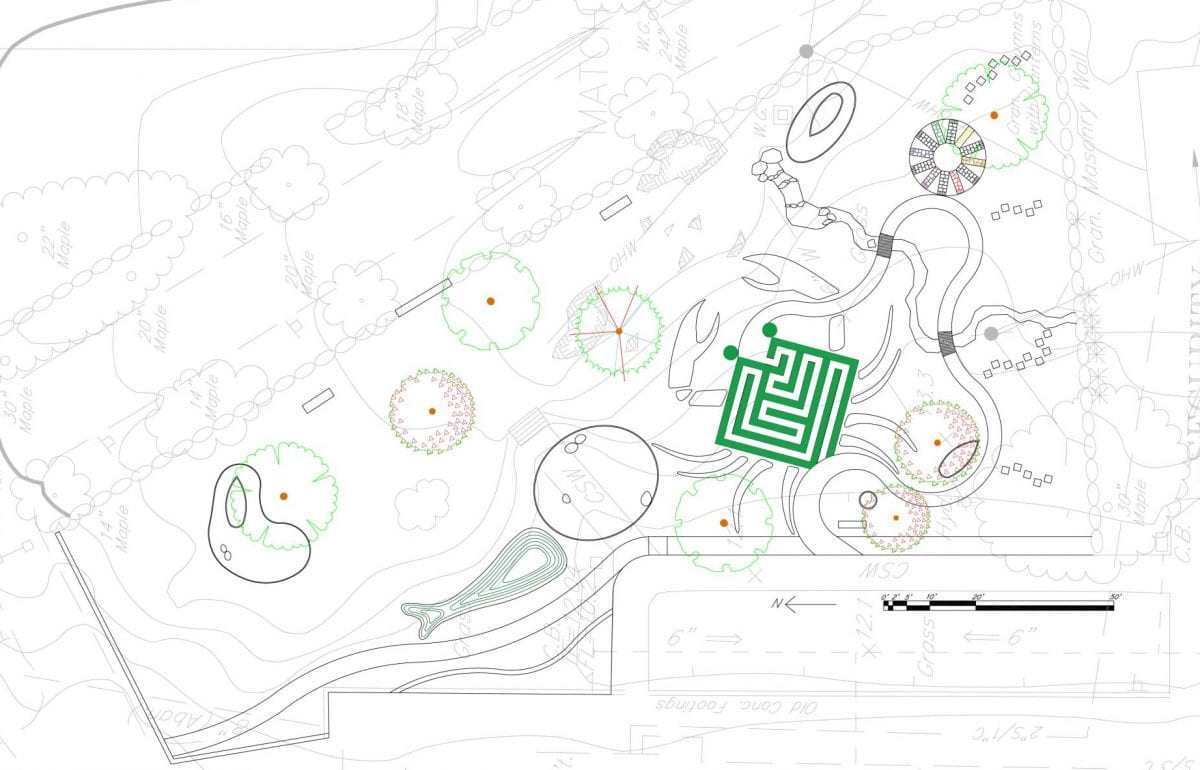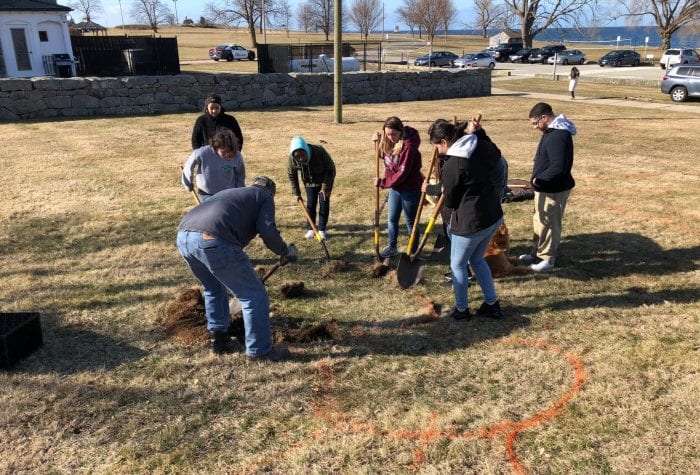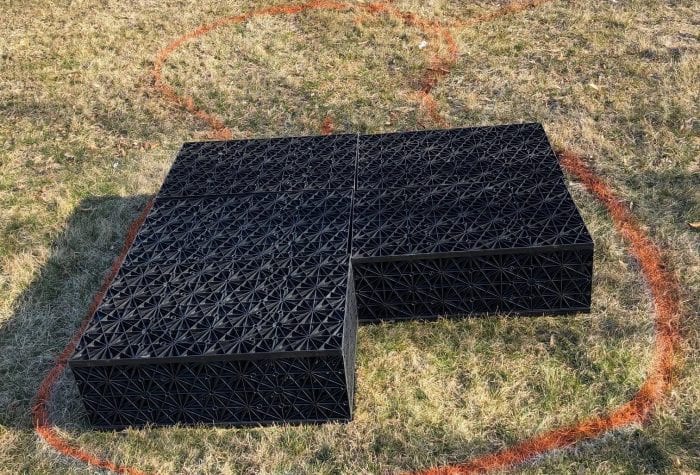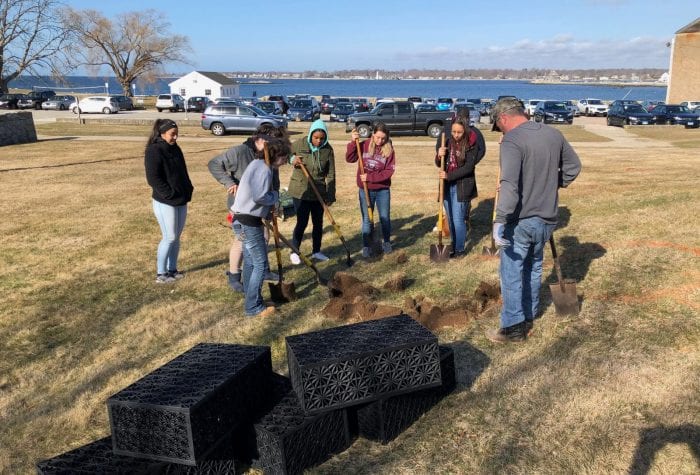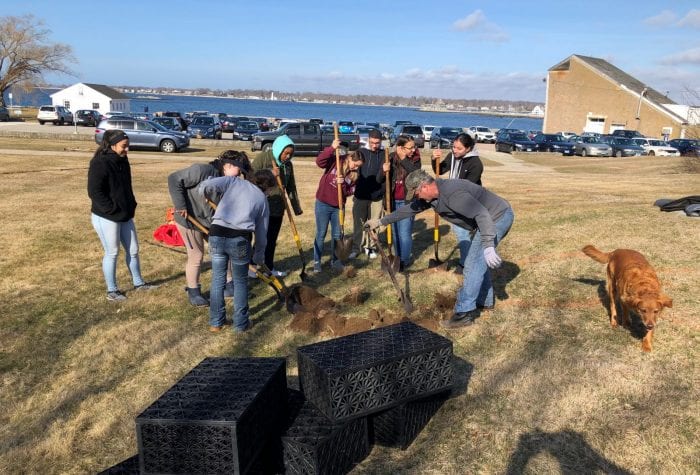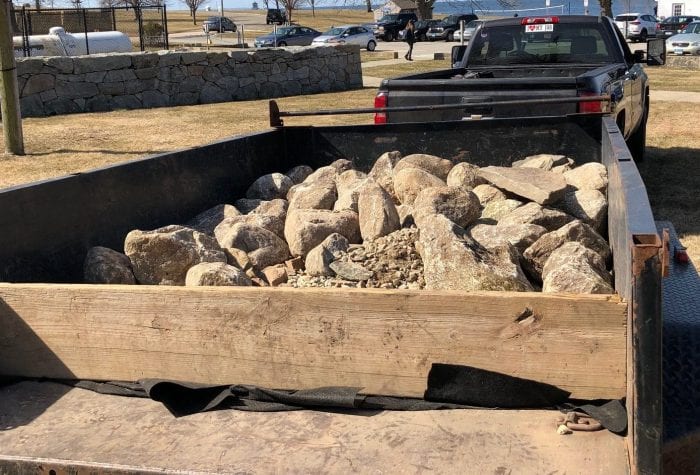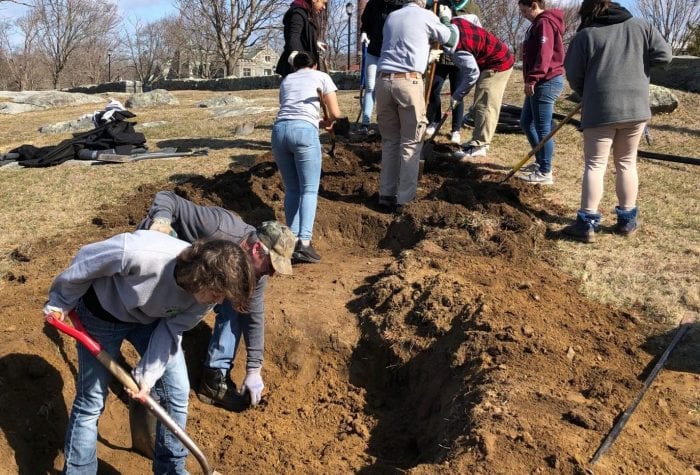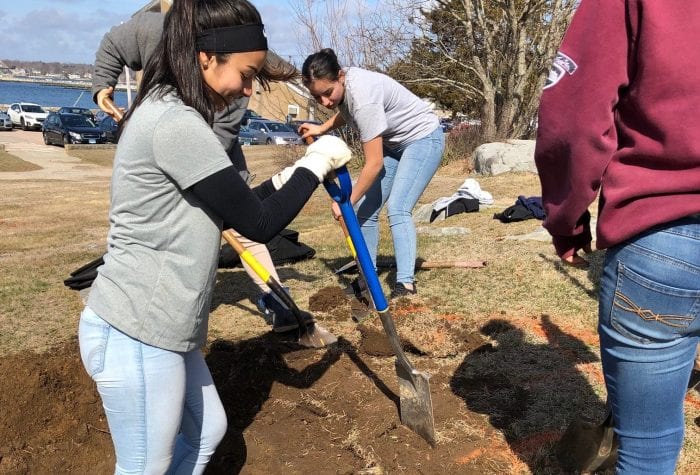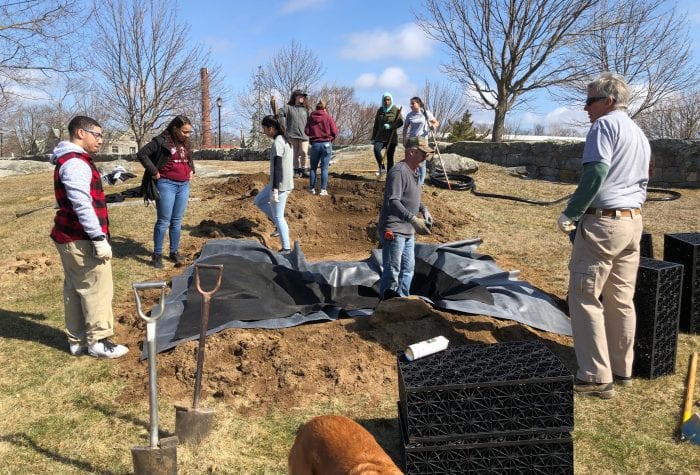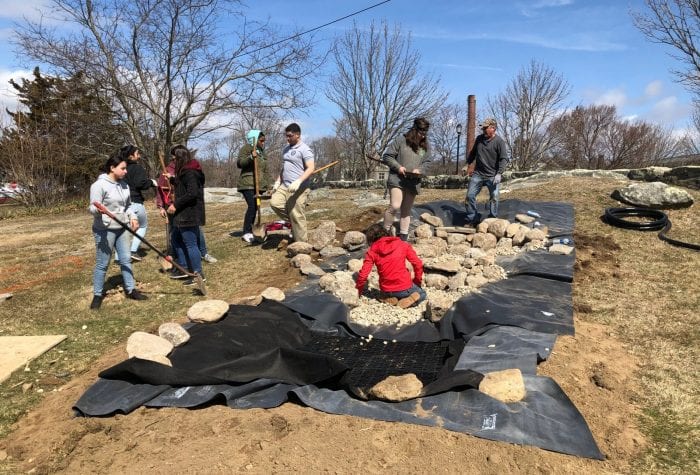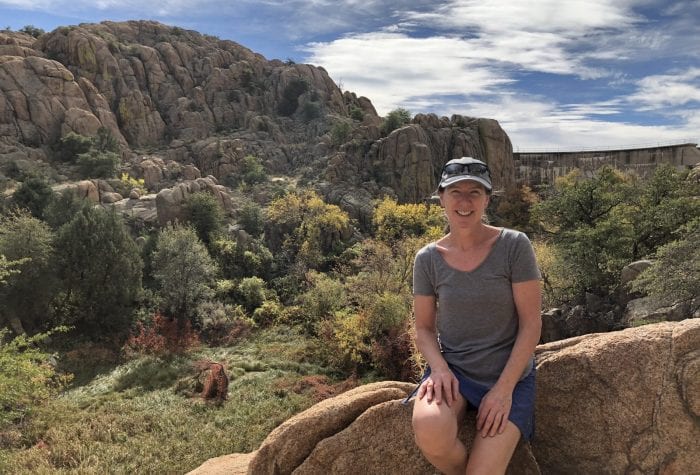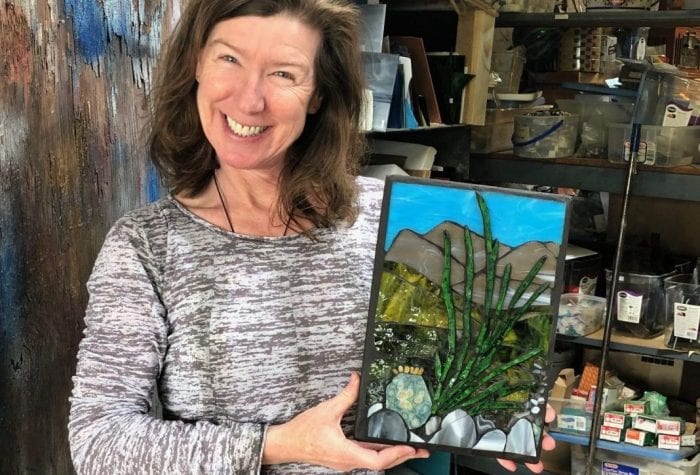Mary once joked, after cutting herself during cooking or maybe taking off part of her knuckle as she grated cheese, that there’s a little bit of Mary in every meal. Later, after Mary emerged from each mosaic class with multiple tiny cuts from the glass, tesserae, and even tiles, I had the sense that there’s a little bit of Mary in every mosaic as well. There truly is something about Mary that goes beyond a hit movie or even “Bloody Mary,” and that is an incredibly dedicated, smart, hardworking, fun, funny and selfless spirit.
I met Mary Ballachino last summer during a mosaic course at the Sacred Art Institute on Ender’s Island. I had just come back from a trip to the Midwest visiting children’s gardens in preparation for designing this children’s garden. We became fast friends and Mary decided to help with teaching the fifth graders at Nathan Hale Arts Magnet School and art students at Waterford High School, so they could learn the art of mosaic and create something unique for the garden.
While Mary likes to call this her “internship,” neither of us realized how little we knew about this particular art or about building outdoor pathways using mosaics on pavers. We’re still learning, and I’m (somehow) shocked by the immensity of this project. Ignorance really is bliss and it must certainly account for half the projects ever started. Thank God Mary has been on this (proverbial and mosaic) path of discovery along with me or, frankly, I’m not sure what I would have done. Let’s just say that my family would have suffered and I don’t think anyone would have enjoyed being around me. But with a friend knee-deep right alongside me, it’s like two pigs in a puddle! Fun! But I digress . . .
Mary, a graphic designer, has amazing abilities that I’m still discovering . . . like her ability to do algebra and geometry when laying out the site design on the actual site, her snap designs to illustrate ideas, her poster-making skills, and her ability to lift multiple heavy pavers without complaint, to name a few. Mary soon emerged as a valuable asset in the design phase of the entire garden as well, working with the Director of the Landscape Architecture department and a small team of us (I’ll talk about this collaboration later!).
In the end, I know that I will look back on this experience and feel not only amazement at all the people who participated in the creation of something so perfect for our community, but awe at the incredible friendship I have found. My name is on the grant, on the design, on the blog, and on every aspect of this project, but to be perfectly frank, there is a lot of Mary in every little aspect of this garden, and I am so thankful to have a friend and partner to take this journey with.
P.S. Many thanks to Mary’s husband Jeff for your help and support and for letting your wife spend so much time with me on this garden. You Rock!
